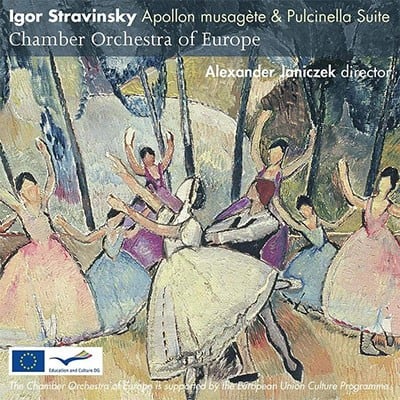strings(8.8.6.8.4)
Abbreviations (PDF)
Boosey & Hawkes
In his Poetics of Music (1942) Stravinsky says: "Summing up: What is important for the lucid ordering of the work – for its crystallization – is that all the Dionysian elements which set the imagination of the artist in motion and make the life-sap rise must be properly subjugated before they intoxicate us, and must finally be made to submit to the law: Apollo demands it." Stravinsky conceived Apollo as a ballet blanc – a "white ballet" with classical choreography and monochromatic attire. Envisioning the work in his mind's eye, he found that "the absence of many-colored hues and of all superfluities produced a wonderful freshness." Upon first hearing Apollo, Diaghilev found it "music somehow not of this world, but from somewhere else above." The ballet closes with an Apotheosis in which Apollo leads the Muses towards Parnassus. Here, the gravely beautiful music with which the work began is truly recapitulated "on high" – ceaselessly recycled, frozen in time.
Repertoire note by Joseph Horowitz
Apollon musagète (or more simply Apollo, as it became known) was Stravinsky’s first collaboration proper with dancer and choreographer George Balanchine. Theirs became a successful and enduring partnership. The scenario is basic, stripped of any particularly meaningful narrative. What remains is a kind of abstract meditation on classical themes, figures and dances. Following the ‘Prologue’ depicting the Birth of Apollo, the three Muses Calliope, Polyhymnia and Terpsichore are introduced, before the work proceeds through a series of conventional variations entirely in keeping with the traditions of the classical ballet. A ‘Coda’ is reached for all four dancers before the final triumphal yet melancholic ‘Apotheosis’ in which Apollo leads the three muses towards Parnassus. Its scoring for strings alone means that, as a concert work, it can fit well into a programme of chamber orchestra or string repertoire, classical as well as contemporary.
Repertoire note by Jonathan Cross

Chamber Orchestra of Europe/Alexander Janiczek
Linn CKR330

